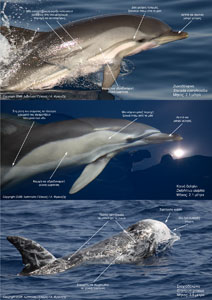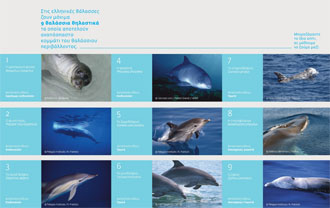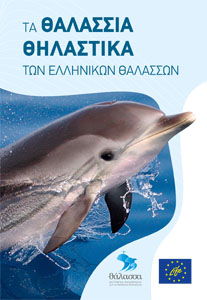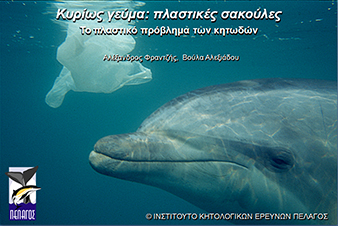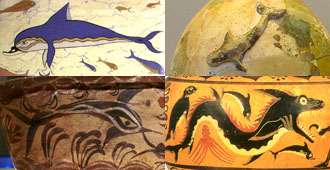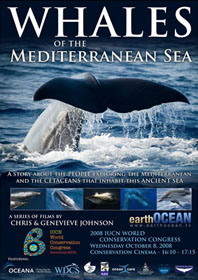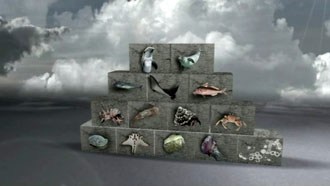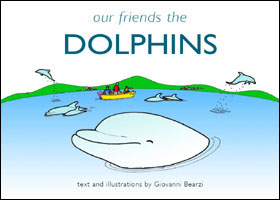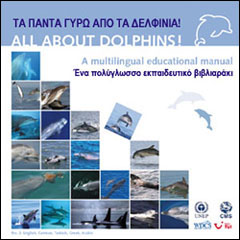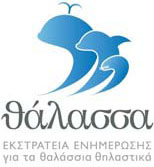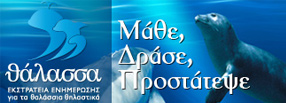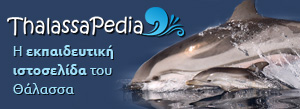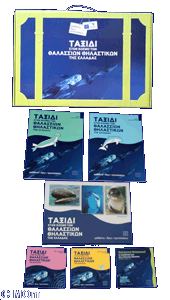In this page of the Institute's website you can find material about the transfer of specialized knowledge about cetaceans (for example how to distinguish the dolphin species or which species of cetaceans inhabit the Greek Seas), as well as useful material that allows young people to acquire more general (and highly desired…) education. Believing that the second kind of knowledge is much more important than the former one, we first propose you to visit our webpage "We suggest…". You will find there, brief and comprehensive videos and documentaries that we have selected, with a double aim: 1) To acquire a taste of the beauty of our world through impressive pictures, messages and knowledge, 2) To form a global conception and the essential rationale about questions, such as: In what kind of world do I live? What is wrong and drive us to the destruction of our environment? What is my role as a human being, active citizen, inhabitant of our unique earth and what positive action can I take to stop the decline? After you take a glimpse of the proposed material and decide what you want to watch first, the best is to let the young persons express their opinion. We hope that our ideas will give you a lot of stimuli for enriching discussions with them and between them.
HOW I CAN RECOGNIZE THE 4 DIFFERENT DOLPHIN SPECIES Detailed photographic presentation of external morphological differences between 4 dolphin species that exist in permanent populations in the Greek seas. The aim is to be able to recognize them in case of encounter in their natural environment. This leaflet is originally produced to describe the dolphins of the Gulf of Corinth (where all 4 species coexist), but everything mentioned inside is valid for all Greek seas. Production: Pelagos Cetacean Research Institute (2008) Leaflet (triptych, two-pages Α4, pdf format) |
||
THE 9 MARINE MAMMAL SPECIES OF THE GREEK SEAS Photographic presentation of the 8 cetacean species and one species of seal, that have permanent populations in the Greek seas, followed by comments about their ecological significance and dangers threatening them. Scientifically edited by Pelagos Cetacean Research Institute. Production: THALASSA Project (2012) Leaflet (triptych, two-pages Α4, pdf format) |
||
TEXTBOOK ABOUT THE 14 SPECIES OF MARINE MAMMALS OF GREECE Manual containing a detailed presentation of the 14 marine mammal species (13 cetaceans and 1 seal) that have been registered in the Greek Seas. Except from these species, there are chapters about cetacean evolution, the ecological significance of the marine mammals for the sea environment, the threats they are facing, the situation of their protection and the relative legislation, and finally, the measures to adopt in order to protect them. Scientifically edited by Pelagos Cetacean Research Institute. Production: THALASSA Project (2012) Booklet (66 pages, pdf format) |
||
MAIN DISH: PLASTIC BAGS Ten-minute presentation with dramatic examples from the Greek Seas on the problem that the irrational production and use of plastic bags and other plastic products of our "civilisation" have creted. Plastic items that pass from our hands and go to the marine environment end up in the stomachs of sperm whales and dolphins and drive to their painful death. Production: Pelagos Cetacean Research Institute (2016) PowerPoint Presentation with automatic narration (ppsx format) |
||
CETACEANS AND ANCIENT GREEK CIVILIZATION General introduction on the subject and brief-sampling presentation of the appearance of different cetacean species on ancient Greek historical and mythological representations. Concerning cetaceans and ancient Greek mythology, see also the webpage about Nereis. Production: Pelagos Cetacean Research Institute (2012) Webpage (html format) |
||
WHALES OF THE MEDITERRANEAN SEA A series of 5 very informative documentaries about cetaceans, the threats and their conservation in the Mediterranean Sea. Pelagos Cetacean Research Institute has participated in various ways in these documentaries. From EarthOCEAN 2007 (Chris Johnson, Genevieve Johnson) 1) Mediterranean Sea: The sea in the middle of the earth (9:46") 2) Spermwhales of Greece: Life in the trenches (17:32") 3) Fishy Business: The illegal driftnet fishery (13:52") 4) Disappearing dolphins (17:27") 5) Sanctuaries of the Sea: Are the Marine Protected Areas for Cetaceans the solution?; (15:34") Documentary (can be watched, or downloaded as mov podcast format) |
||
MARINE MAMMALS: OUR COHABITANTS IN THE GREEK SEAS Educational documentary of the THALASSA Project- Learn, Act, Protect, with information about all species of cetaceans and seal living in the Greek seas, as well as about all wider ecological ideas about the marine environment, dangers that threaten marine mammals and ways to protect them. The documentary is available in 4 parts. Film direction: Manos Gasteratos Production: THALASSA Project (2012) Documentary - Time length 31:55" |
||
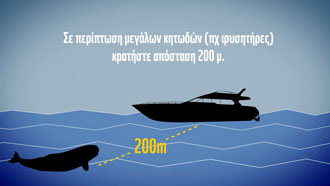 |
INSTRUCTIONS FOR NAVIGATORS ¨A useful guide created as a part of the informative campaign "THALASSA" (SEA), about what we have to do in case we meet a small or a big marine mammal when we are in a boat. It is better for all of us to be informed! Graphics: Vassilis Kokkinidis, WWF Hellas, THALASSA Project(2012) Video - Time length 1:37" |
|
OUR FRIENDS THE DOLPHINS The younger friends of dolphins will have the pleasure to discover these graceful animals, as well as the human activities that threaten their survival through the pages of Giovanni Bearzi’s book. The booklet is available in many languages and was translated and edited in Greek by the Pelagos Cetacean Research Institute. Giovanni Bearzi’s edition (2006) Booklet (32 pages, pdf format) |
||
EVERYTHING ABOUT DOLPHINS A multilingual educational booklet of UNEP on the occasion of the year of dolphin (2007). The booklet was translated and edited in Greek by members of Pelagos Cetacean Research Institute, so that it can be used at schools, as well as by all children who live in Greece and they still have the chance to be close to seas where we can meet dolphins. Edition of international organizations: UNEP, CMS, WDCS (2007) Booklet (24 pages, pdf format) |
||
THALASSA - LEARN, ACT, PROTECT A full training and sensitization program about the marine mammals of Greek Seas. The program includes two websites (see below), educational material, a journal, flyers, posters, a manual, a documentary and an educational suitcase for schools. It is materialized by WWF Hellas and MOm, with the participation of the Pelagos Cetacean Research Institute and of Tethys Research Institute. Pelagos Cetacean Research Institute participated in the scientific editing of all material and in the documentary about cetaceans, as well as by providing data, knowledge about cetaceans, photographic, acoustic and video recorded material. Production: THALASSA Project (2012) Program website: http://www.thalassa-project.gr Website - Program |
||
THALASSAPEDIA This website was created in the frame of the program "THALASSA – Learn, Act, Protect" in order to become more familiar with the 14 species of marine mammals of Greek Seas. It is mainly addressed to young boys and girls and to their near ones, such as teachers and parents. Production: THALASSA Project (2012) Encyclopedia website: http://www.thalassapedia.gr/en/ Internet Encyclopedia |
||
THE LITTLE EDUCATIONAL SUITCASE FOR SCHOOLS This is an educational package of the program Sea targeting young public and having as an aim to raise awareness and inform the students of Pre-school and Primary school about marine mammals of the Greek Seas. It contains group games, and experiential activities, as well as a guidebook for teachers, an activity book and working sheets for the school class, 3 jigsaw puzzles, one CD with pictures, one CD with sea sounds. The package-suitcase can be borrowed and kept up to 3 weeks in each school. Production: MOm, THALASSA Project (2012) Little suitcase (link for relative information in html format) |










